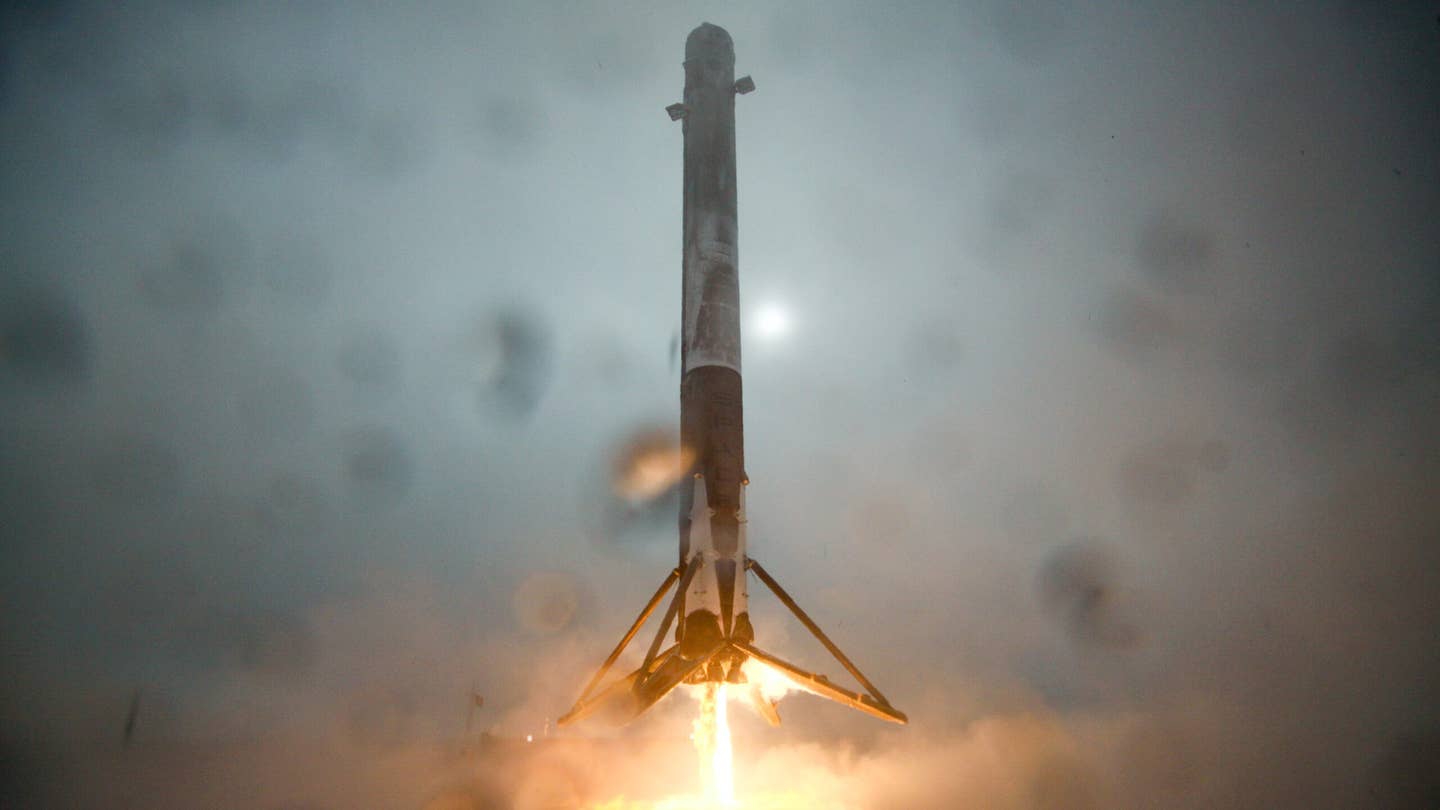SpaceX Falcon 9 Rocket Grounded Amid Upcoming Human Spaceflight Missions
The FAA opens a mishap investigation into the company’s workhorse booster after it tipped over while attempting to land on a droneship.

SpaceX’s Falcon 9 booster is a key component of the company’s crewed and uncrewed spaceflight missions. [Courtesy: SpaceX]
SpaceX’s Falcon 9 booster, a key piece of the company’s crewed and uncrewed spaceflight efforts, is grounded for the second time in as many months.
The FAA on Wednesday announced it will require an investigation into Falcon 9’s launch of 21 Starlink satellites that morning, which concluded with the booster tipping over into the Atlantic Ocean. Depending on the length of the investigation, two crewed SpaceX missions that will rely on the rocket—one for NASA, the other for a billionaire entrepreneur—could face setbacks.
“We’re just focused on recovery weather at this point. I think that is still [the] gate to our launch.” Jared Isaacman, the purchaser and commander of the latter mission, said in a post on X, seeming to dismiss concerns of a lengthy inquiry.
Wednesday’s flight was the first of two planned back-to-back Starlink launches, the second of which was called off. After its second stage successfully deployed the satellites into orbit, Falcon 9’s first stage appeared to suffer a collapsed landing leg when it touched down on SpaceX’s A Shortfall of Gravitas droneship, stationed several miles off the Florida coast. As flames erupted around it, the booster gave way and tumbled into the water. Beyond the loss of the booster, no injuries or damage were reported.
Still, the incident was enough to bring an FAA investigation, seemingly ending a streak of more than 250 successful SpaceX booster recoveries dating back to 2021. The first stage that flew Wednesday, B1062, completed a record-setting 23rd launch and landing. It played a crucial role for SpaceX, serving as the booster for Inspiration4, which sent the first all-civilian crew to orbit, and Ax-1, the first crewed mission to the International Space Station flown entirely by commercial operators.
“Losing a booster is always sad,” said Jon Edwards, vice president of Falcon launch vehicles at SpaceX, in a post on X. “Each one of them has a unique history and character. Thankfully this doesn’t happen often, due to the robust design and vigilance of the team.
An investigation does not necessarily mean a prolonged grounding. SpaceX will need to submit a final report, including any actions it needs to take to prevent the issue from happening again, for FAA approval.
But if the mishap did not jeopardize public safety or Falcon 9’s safety-critical systems, SpaceX could request the FAA make a public safety determination. If approved, that would allow launches to continue during the investigation. When Falcon 9 was grounded in July, SpaceX used this method to return to flight in just two weeks.
“We are working as hard as we can to thoroughly understand root cause and get corrective actions in place ASAP,” Edwards said on X. “One thing we do know though is this was purely a recovery issue and posed no threat to primary mission or public safety.”
SpaceX is relying on Falcon 9 to launch Isaacman and three other crewmembers, including the first company employees to fly to space, on the historic Polaris Dawn mission. Originally scheduled for this week but delayed due to weather concerns and a small helium leak, the five-day mission will feature the first attempt at a civilian spacewalk. It also aims to orbit at a higher altitude than humans have reached since Apollo 17 more than half a century ago.
Complicating matters somewhat is that Launch Complex 39-A at Kennedy Space Center in Florida, which SpaceX will use for Polaris Dawn, is needed by NASA for the Europa Clipper mission scheduled for October 10. The company will also use Launch Complex 40 at Cape Canaveral Space Force Station to launch Crew-9 to the ISS, which itself could be delayed by the investigation.
Unlike other Commercial Crew rotation missions SpaceX has flown for NASA, Crew-9 will have two astronauts rather than four to accommodate Butch Wilmore and Suni Williams, who have been at the ISS since June on Boeing Starliner’s inaugural crew flight test (CFT). The space agency over the weekend opted to bring home the astronauts on SpaceX’s Dragon capsule rather than Starliner, making Falcon 9 an important piece of the operation.
Any delay to Crew-9 could further force NASA to come up with a new plan for Starliner. The capsule needs to depart the space station before Crew-9 launches in order to make way for Dragon.
Like this story? We think you'll also like the Future of FLYING newsletter sent every Thursday afternoon. Sign up now.

Sign-up for newsletters & special offers!
Get the latest FLYING stories & special offers delivered directly to your inbox






